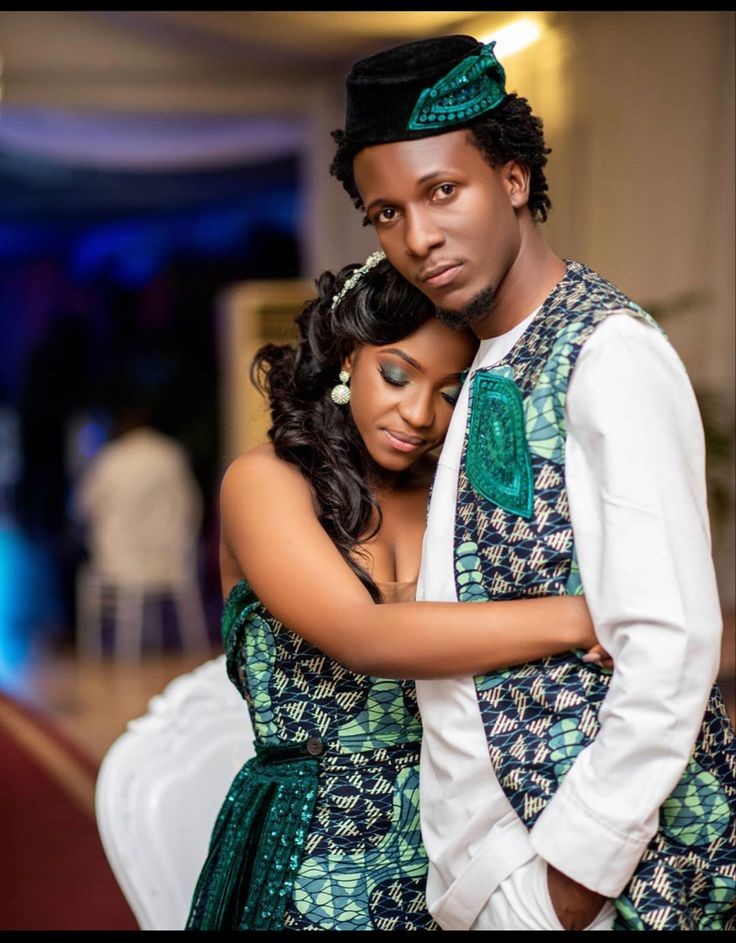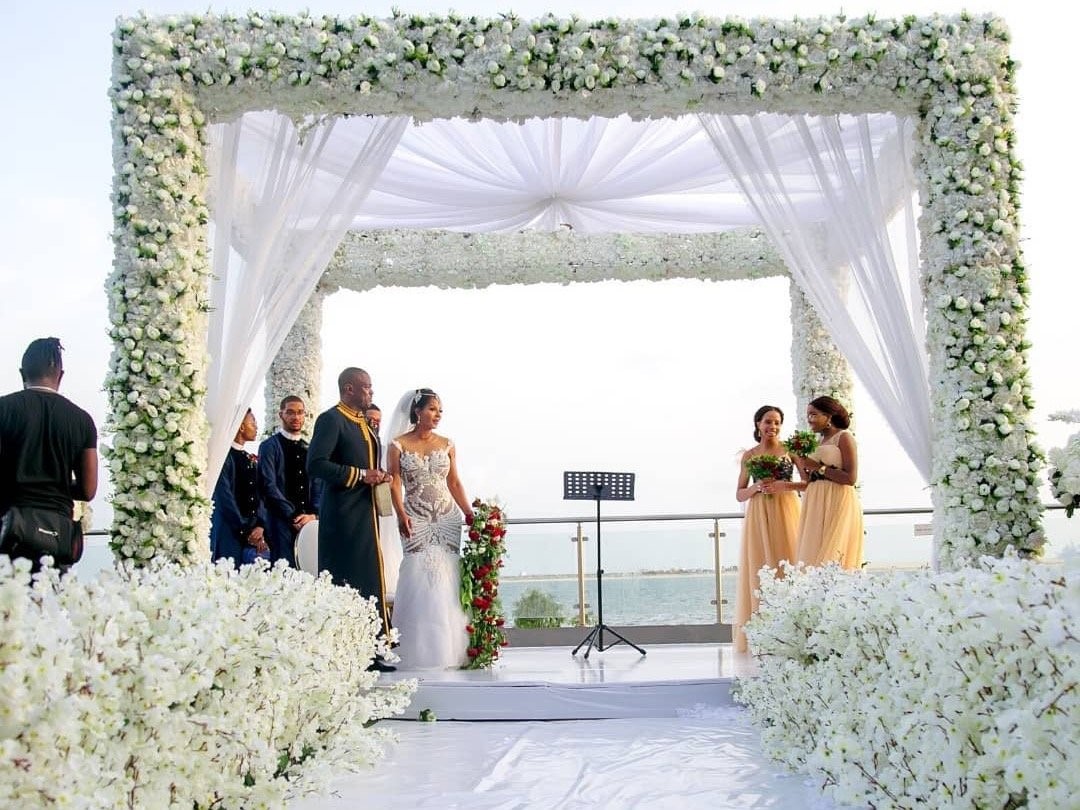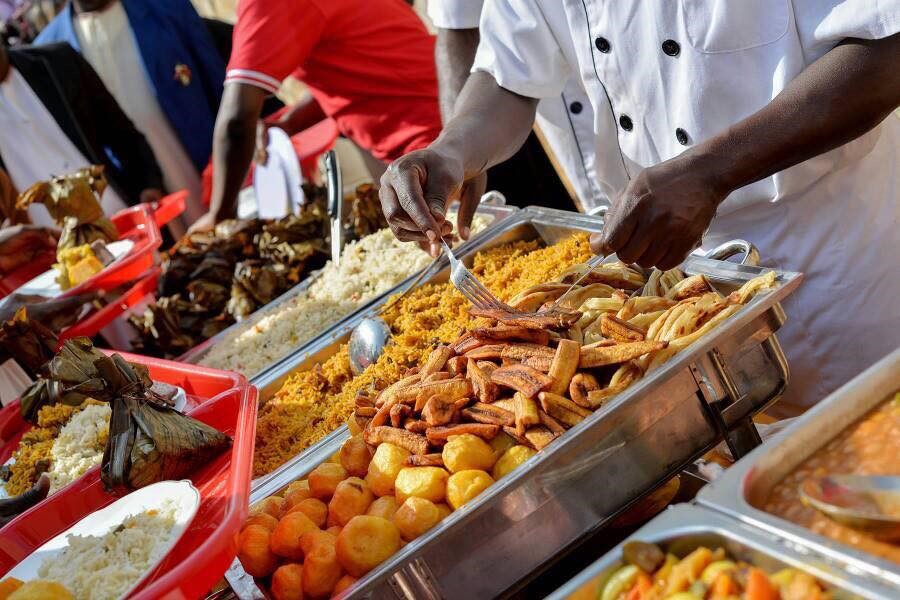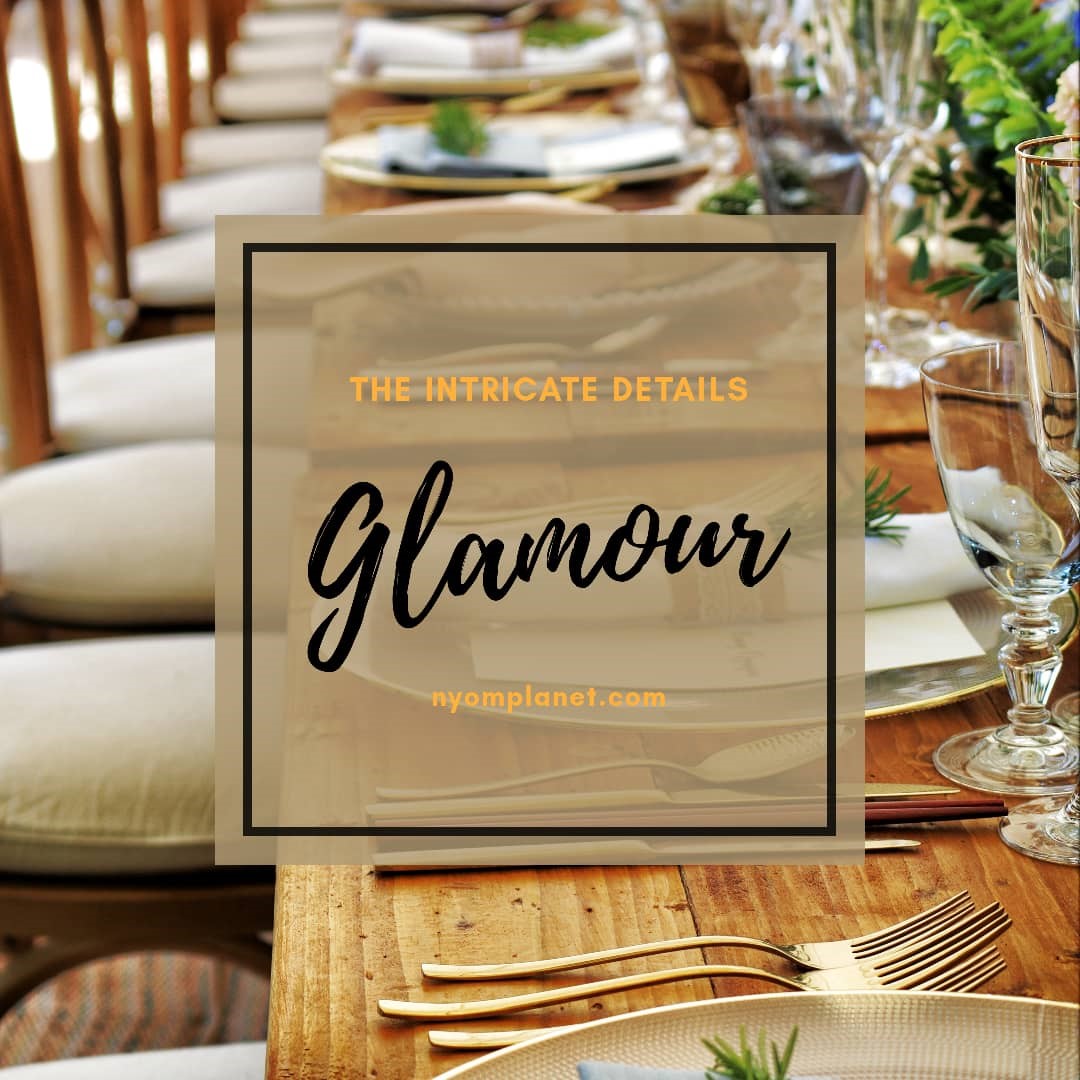Traditional African Wedding Attire
Africa is the world’s second largest and second most populous continent. 54 countries and over 3,000 ethnicities, the continent is a cocktail of both culture and art. And you bet this spills over into their marriage traditions! Traditional weddings are those that are usually conducted according to the customs and traditions of a given tribe. It is at these weddings that both families (of the bride and groom) formally join into one; bride price is paid; letters are read; prayers offered for the couple and well-wishers celebrate the marriage feast.
Many things make a traditional wedding beautiful but the bride’s outfit is usually the highlight. No matter the country or tribe, traditional dresses remain the biggest marvel at the ceremony.
The global infuse of cultures and interracial marriages has sometimes sent the origin of the attires to obscurity as different people dress in traditional attires of culture they don’t belong to. Today we take you back to the origins of some of Africa’s most fascinating traditional wedding attires.
UGANDA
Buganda is one of Uganda’s oldest kingdoms and the largest of the remnant kingdoms in East Africa from the medieval ages. Its people, the Baganda have popularized their traditional wedding attire sipping through most of the region. Itself adopted from ancient Arab traders that flocked the region in the early 19th Century, it consists of the bride’s “gomesi” or ‘busuuti’ which is a floor length dress with short pointed sleeves and tied around the waist by a sash. It is characterized by 2 buttons on the left side of the round neckline. The groom wears a tunic traditionally called a “kanzu” which is a white or cream colored robe with an embroidered neckline. The groom can then wear a suit jacket over his kanzu.
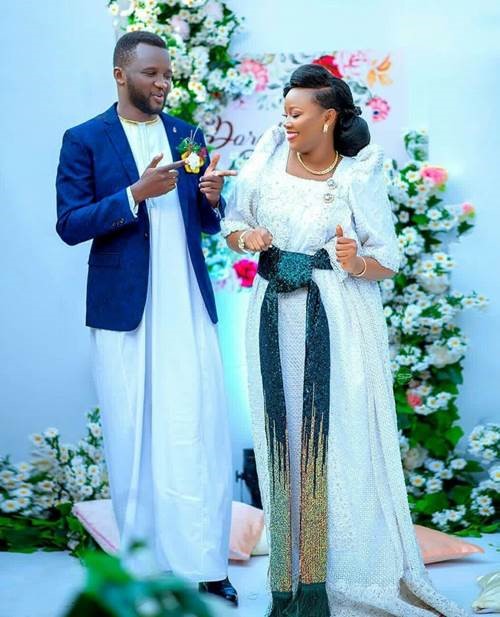
ETHIOPIA
Ethiopia is one of the world oldest nation states, with rich traditions that date as far back as the biblical times. The traditional wedding attire borrows from the dresscode of ancient kings (and priests) that ruled over Ethiopia through time.
The Ethiopian Kaba which is the complete wedding set consists of an embroidered cape for both the bride and groom accompanied by the bride’s dress known as Habesha Kemis and Habesha Libs for the groom. These are usually hand embroidered on the neckline, sleeves and the dress’ bottom with rich floral and ancient medieval symbols and patterns. The bridal look is further accentuated by a bridal henna tattoo and gold accessories.
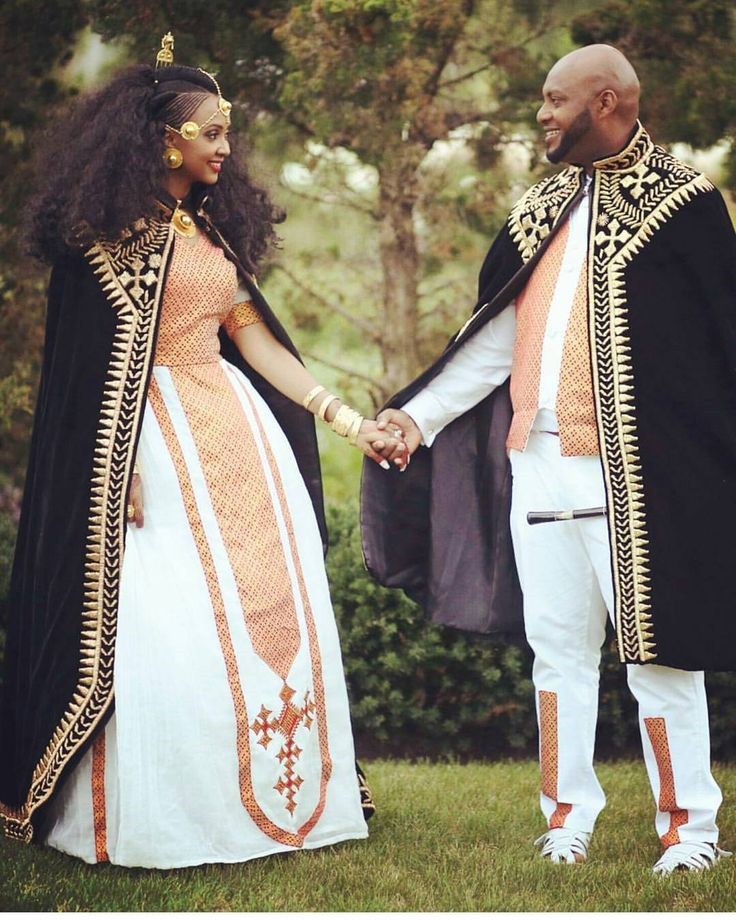
GHANA
The Asante Kingdom in Ghana has a rich and fairly well documented history. The Asante people and North Ghanians derive their ancient wedding attire from the rich cultural heritage of this ancient kingdom which includes brightly colored and patterned design fabric known as Kente, a type of silk and cotton fabric made of interwoven cloth strips. The choice of color of the attire is usually a representation of a specific religious belief or custom.
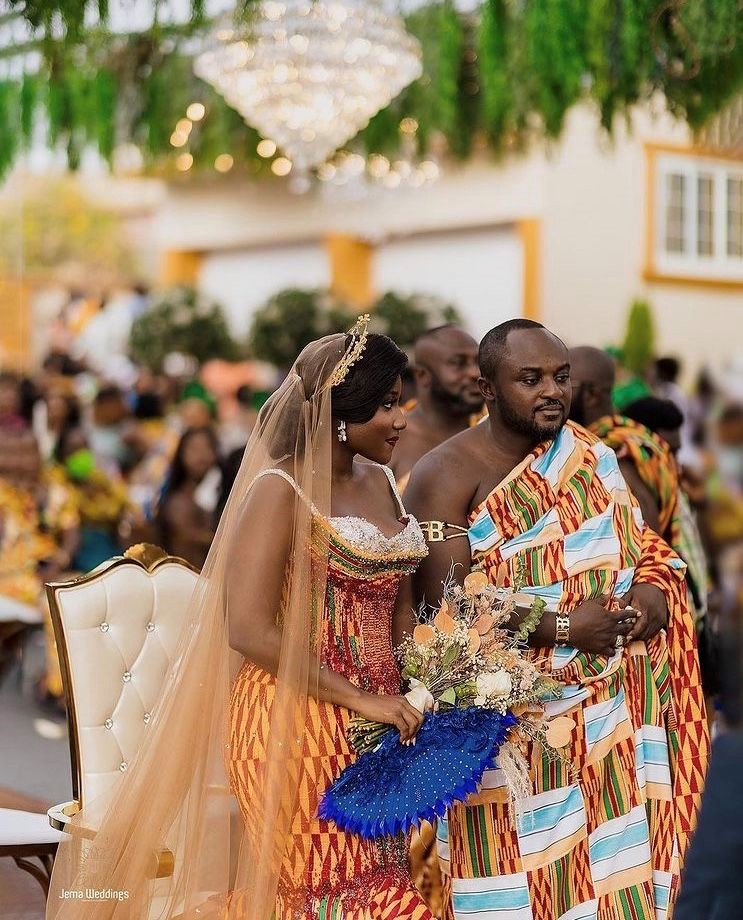
NIGERIA
The Yoruba tribe in Western Nigeria is one of the biggest in the country. Its rich culture is a big influence on the traditional wedding attire of couples in that part of the country; the bride wears special clothes from head to toe usually a combination of head piece (Gele), wrappers and shoulder scarf. The attire is made from traditionally hand woven wool called Aso oke. The wedding attire is known to be one of the most elegant as the people identify so much with royalty. They also carry a hand fan. The groom wears a robe known as Agbada, cap aka fila
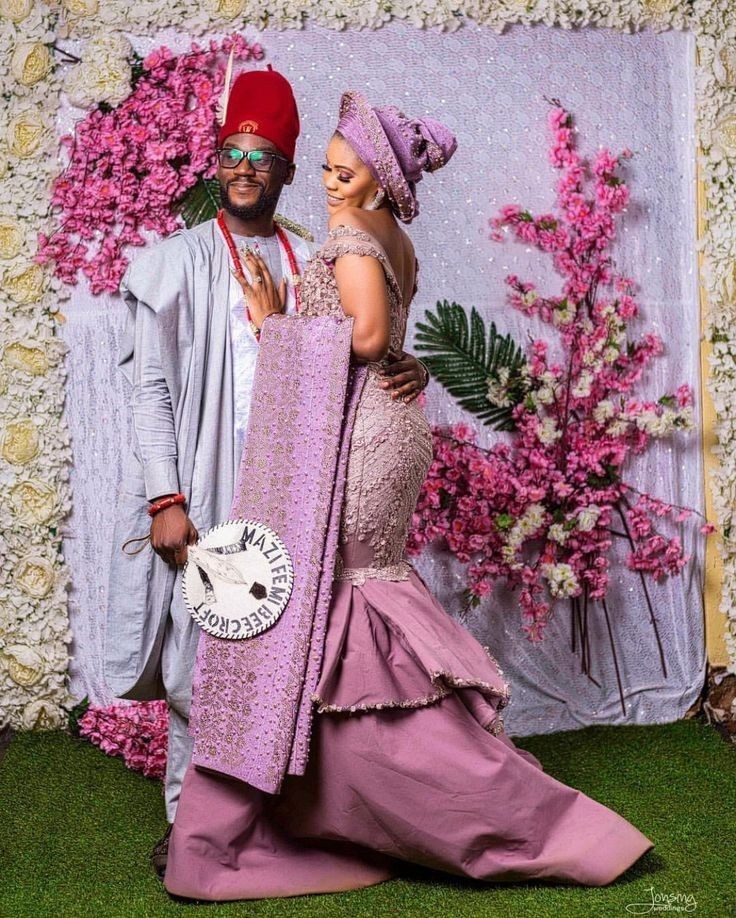
SOUTHAFRICA
The Zulus are most famously known for their most fearless Emperor Shaka Zulu whose courage and leadership established the ancient Zulu Empire before being assassinated by his brothers. Present day South Africa is what occupies most of what remained of that Zulu Empire.
The Zulu bride usually wears a skirt (isidwaba) and an iconic circular shaped hat(isicholo/ inkehli) and accessories with lots of colorful beads. The hats are measured and designed to protect the women from the sun.
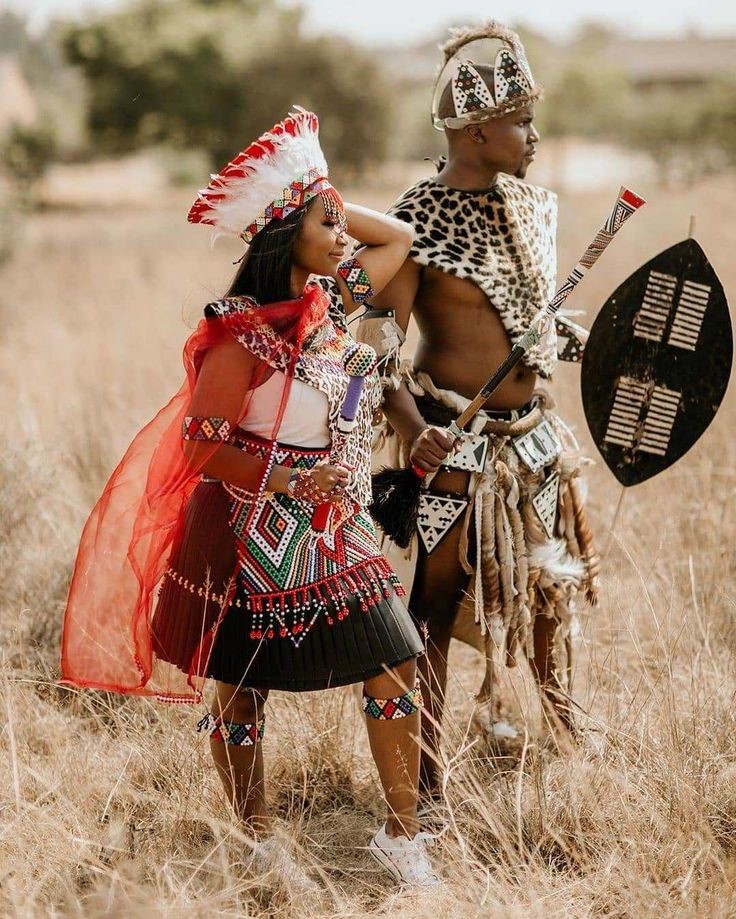
CONGO
The Democractic Republic of Congo and The Republic of Congo combined form the largest land size on the continent. The Congolese are mostly known for their entertaining music and dance but also fashion.
The ‘dote’ which is the name for the traditional Congolese wedding is itself a tale for the movies but typical Congolese dress is made of colored prints normally called ‘pagne.’ For traditional weddings, Congolese women have adopted ‘Liputa’ which involves wearing modern attire made of colorful materials in vogue. The attire can be sown in whichever design one chooses for example it can be composed of four pieces made from the same material. One piece is a blouse, the other a wrapper, one to tie around the waist and one as a turban. It could also be just a dress and turban usually enhanced by matching jewelry. The groom could also wear a shirt of the same material.

MOROCCO
Moroccan weddings are rooted in rich tradition and heritage.
The Morrocan bride wears a takshita for the ceremony while the groom wears a suit (usually tuxedo) but can later change into the traditional Moroccan tunic called a Jabadour or the djellaba. The takshita is a traditional Moroccan garment worn by women for happy occasions and celebrations including weddings. During the ceremony, a bride will usually change into four to seven of different kinds of attire representing different Moroccan cultures.
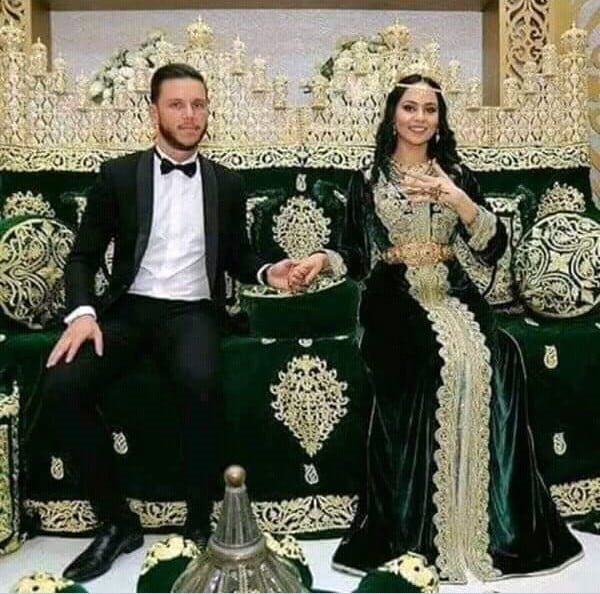
The traditional engagement ceremony is known as ‘Je Peniot’ where dowry (Mahr) and gold and other gems (Shabka) are exchanged. Typical Egyptian wedding attire is a blend of gold and other precious stones. The attire fabric has a color of gold and matching jewelry to complete the look. The bride wears a long dress usually with a trail made of linen with a net over her head and flashy jewelry usually for her husband’s attention. There is a variety to typical Egyptian attire but it will almost always have shinny gems embedded in.
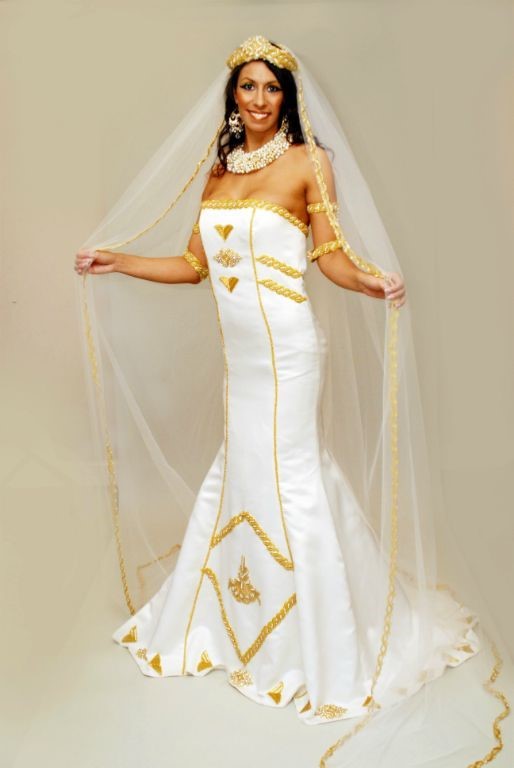
KENYA
The Masai people of Kenya and Tanzania are known for their ‘eccentric’ lifestyle. Cultural wedding attire for the Masai includes a necklace and beaded jewelry together with ‘’Shuka fabric’ ’which is a bright colored traditional robe predominantly red used to wrap around. In addition, Masai men will wear ankle bracelets while women will adorn an explosion of colored fabric and jewelry. They will also have lots of beaded bracelets and big flat beaded decorated necklace in various patterns and colors which identify the clan they belong to as well as their social status.
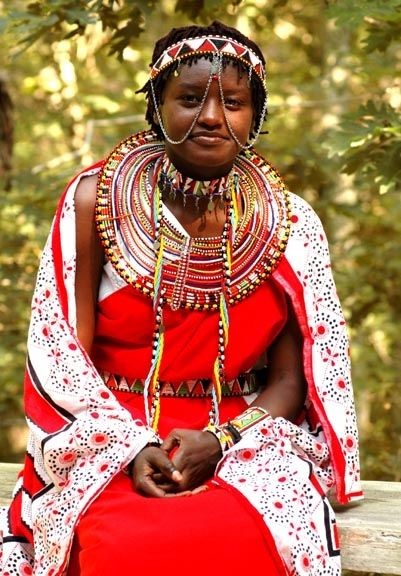
The South Sudan’s wife stealing ceremony common among tribes like the Latuka and the usurious dowry conditions have come under fire in recent years over their indirect promotion of child marriage. Nevertheless, this globally unpopular practice hasn’t robbed South Sudan of its rich cultural marriage traditions and sophisticated marriage practices.
The Dinka bride, for example, wears rich multi-colored ornaments and necklaces together with colourful wraps and headbands. The groom will usually wear animal skin accompanied by dancers dressed in a similar manner. Increasingly though, the grooms are seen to wear suits to these functions.

If you enjoyed this, give us your feedback in the comments below. Also tune in next time as we show you how it is possible to embed African prints in your white wedding dress.


